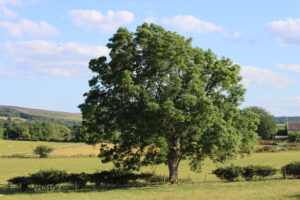Local authorities must play a key role in England’s Tree Strategy
The government has ambitious targets to plant 30,000 hectares of new woodland per year by 2025 across the country and recently published the England Tree Strategy (1) to support these aspirations.
The Association of Directors of Environment, Economy, Planning & Transport (ADEPT) published a formal response to this document in September 2020. David Sutherland, ADEPT environment board member, explains more about the response and the role local authorities have around trees and woodland.
Defra launched the England Tree Strategy consultation in June 2020. This document was produced in support of the 25 Year Environment Plan and sets out the proposed tree policies for England through to 2050.
As explained in the consultation, trees and woodlands have a critical role – they ‘connect people to nature, support the economy, combat climate change and recover biodiversity’.
The strategy document explains how the government’s tree planting programme will be delivered and focuses on expanding, protecting and improving woodlands as well as the importance of engagement with woodlands.
ADEPT developed a formal response to this consultation, working together with members of ADEPT’s Natural Capital and Heritage Group.
The response – while supportive in principle – is dependent on local authorities being resourced with the appropriate tools and resources to deliver on these ambitions.
The policy aspirations must be seamlessly linked with other emerging national environment policies i.e. biodiversity net gain, Local Nature Recovery Strategies, the new Environmental Land Management Scheme (ELMS). The response also recommends a number of areas that need developing.
The rise of tree pests and diseases is becoming a costly issue for local authorities, both from a public safety perspective and from a management/replacement angle.
A recent study (2) estimates the economic cost of ash dieback in Britain to be £14.8 billion over 100 years, but more than half of the total cost (£7.6 billion) is expected to occur within the next 10 years (due to the rapidity of the disease).
The massive scale of the impact on the environment and the landscape from ash dieback cannot be ignored – experts predict it will kill between 80-95% of ash trees.
There is a serious risk that the sheer number of trees lost will exceed the number to be planted; local authorities need to be enabled to meet both challenges.
ADEPT believes that our finest and most important trees and woods need to be properly protected by the planning system and that greater value should be placed on already established trees and woodland.
The England Tree Strategy offers a real opportunity for a step-change in tree protection, and the chance to highlight opportunities to safeguard natural regeneration, scrub and hedgerows.
This could include a review of Tree Preservation Orders (TPOs), which should also take into account the wider benefits that trees provide, We are keen that any changes to the planning system following the White Paper consultation must enhance the protections for trees in any setting.
ADEPT is also urging the government to ensure new tree stock is sourced and grown in the UK, and for robust new processes and resourcing to be put in place to limit disease outbreaks. Tree procurement and biosecurity standards must be put in place for all tree planting schemes.
‘Right tree, right place’ is critical to successful woodland creation and expansion.
It’s about ensuring quality, not just quantity, of trees to ensure that functioning woodland ecosystems are provided that deliver multiple benefits from biodiversity, flood protection as well as carbon sequestration.
The England Tree Strategy places emphasis on ‘street trees’, which help to make our towns and cities more pleasant, healthier and more resilient places – they help prevent flooding, reduce urban heat, filter pollution from the air and make great places for experiencing and enjoying nature.
However, creating new street trees can be complex and costly – appropriate funding mechanisms must be in place for local authorities to deliver and maintain these.
As well as more street trees, woodlands should be incorporated into the design of new developments along with plans for accessible new woods near to where people live.
ADEPT is supportive of the draft England Tree Strategy but recognises key areas that need to be considered by Defra.
Trees provide so many benefits for people, the economy, the climate and nature itself – we have the opportunity to shape our environment in a considered, responsible way and the issues we have outlined must be built into the final strategy.
ADEPT’s response to the draft England’s Tree Strategy can be found on the ADEPT website: https://www.adeptnet.org.uk/documents/england-tree-strategy-consultation-response
• More information about ADEPT can be found on its website: www.adeptnet.org.uk
• More information about ADEPT’s work on climate change can be found here: https://www.adeptnet.org.uk/projects/climate-change-hub
1. England Tree Strategy Consultation (2020) https://consult.defra.gov.uk/forestry/england-tree-strategy/supporting_documents/englandtreestrategyconsultationdocument%20%20correctedv1.pdf
2. https://www.sciencedirect.com/science/arti cle/pii/S0960982219303318












